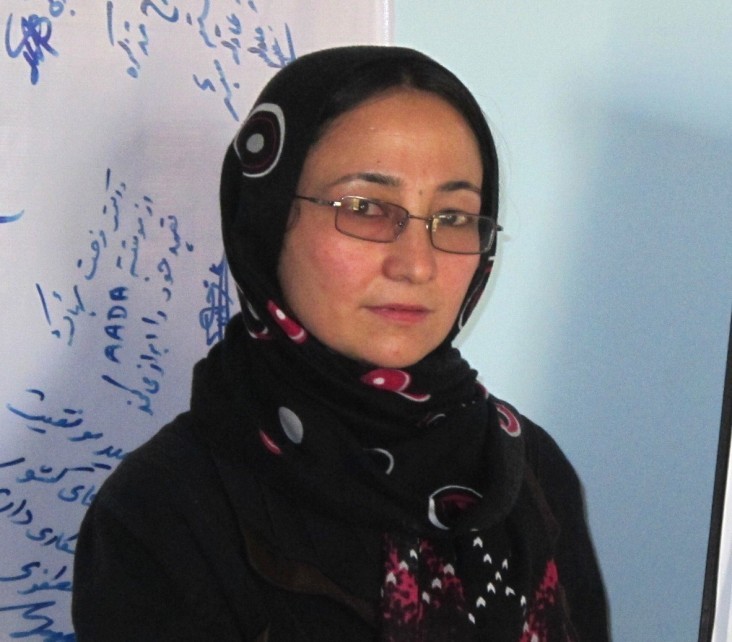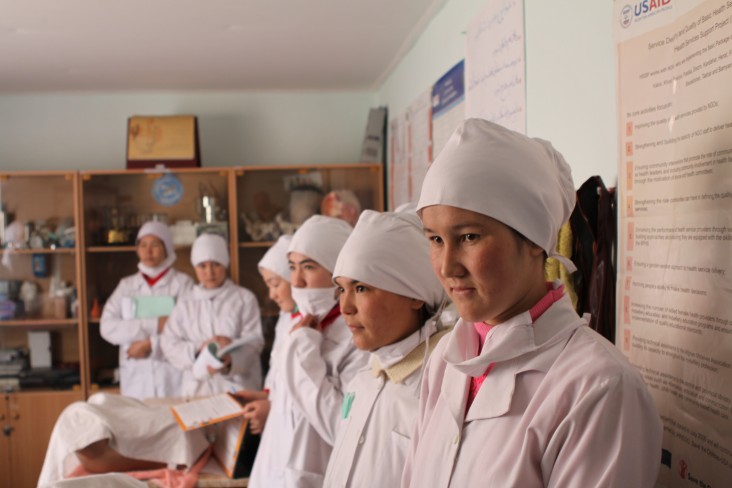Speeches Shim

USAID Maternal and Child Health Investments, FY16: $34,350,000
Afghanistan Quick Facts: Maternal Health
51 percent of births attended by a skilled birth attendant, 48 percent delivered in a health facility1
2,112 midwives trained through USAID support since 2002
80 percent of facilities employed a female health worker in 2015, compared to 25 percent in 20022
Despite significant progress over the past decade and a half, in Afghanistan, maternal and child mortality rates are among the highest in the world. Skilled birth attendants, including trained nurse-midwives, or kabilaha, play an instrumental role in preventing maternal and child deaths -- yet in 2002, shortly after the fall of the Taliban regime, only 467 trained nurse-midwives served the entire country.3
Since then, more than 4,000 women have been trained to be midwives -- more than half of them through the support of the U.S. Agency of International Development (USAID). At the same time, USAID is working to establish trained midwifery as a profession worthy of support and respect.
Friba Hashimi was among the first women trained by USAID to provide labor and delivery services in Afghanistan.4 During childhood visits to the local hospital, she recalls being fascinated by the doctors and nurses that she observed, but never dreamed that a medical career for herself was a possibility.
When Hashimi heard that a Community Midwifery Education program was coming to her province for the first time, she immediately applied to take part. Her family moved from Ghajorak to the center of Bamyan province, about an hour and a half away, to allow her to attend the training. Her husband gave up his job and took care of their two children while his wife studied.
The intensive course lasted 18 months. Upon graduation, Hashimi moved back to her home district to serve as a community midwife. She became the only female caregiver at the local clinic, often providing her patients with modern health care for the first time.
“I provided antenatal care and tried to raise awareness among families about pregnancy-related emergencies,” she said. “Soon enough, I began to identify early warning signs in pregnancies and referred patients before life-threatening complications could arise.”
In due time, Hashimi was promoted to be a trainer in the midwifery school, and today few babies come into the world in Ghajorak without her knowledge. Usually, she is the midwife that handles the delivery. Hashimi has become one of the most respected and sought-after government workers in her entire village, male or female.
As Hashimi considers how her life had been transformed since her first day of class, she can’t help but smile. “My education as a midwife has changed my life dramatically. It enabled me to support women of my country and save their lives—and the lives of their babies.”

MIDWIVES MATTER
Across Afghanistan, thousands of women like Hashimi are safely bringing children into the world in villages and districts where, previously, a new mother was on her own when giving birth.
USAID is committed to improving the quality, accessibility and equity of essential health services for communities, households and individuals. In Afghanistan, our support of midwives like Friba Hashimi has seen dramatic results already: in 2002, only 25 percent of health facilities employed a female health worker; as of 2015, 80 percent of facilities did. The percentage of women attended by a skilled care provider at birth increased from 14 to 52 percent over that same period.5
Despite these successes, rates of maternal and child mortality in Afghanistan remain high. In the 2014 Acting on the Call Report, USAID formulated a roadmap for making data-driven decisions and targeted investments to save the lives of 15 million children and 600,000 women by 2020.6 In Afghanistan, scaling up high impact practices could save the lives of 470,000 children under-5 and 19,000 women by 2020.7
Healthy women and children are one of the best indicators of stability and progress in a nation. Our efforts in Afghanistan are helping the Government meet the health needs of its people - now and in the future - and helping build a more secure world.
Meet more of the women and children that benefit from USAID's efforts.
« Back to the Acting on the Call home page
1 Afghanistan Demographic and Health Survey 2015: Key Indicators. Central Statistics Organization (CSO), Ministry of Public Health (MoPH), and ICF International, 2016.
2 Data from USAID and the Afghanistan Ministry of Public Health. Unpublished.
3 State of Afghanistan’s Midwifery 2014. United Nations Population Fund, Country Office Afghanistan, 2014.
4 “Afghan Midwife Delivers for Her Community.” USAID Frontlines, November/December 2014.
5 Fact Sheet: Improved Health for Afghan Mothers and Children. USAID Afghanistan, May 2015.
6 Acting on the Call: Ending Preventable Child and Maternal Deaths. USAID, June 2014.
7 Acting on the Call: Ending Preventable Child and Maternal Deaths. USAID, June 2015.

Comment
Make a general inquiry or suggest an improvement.